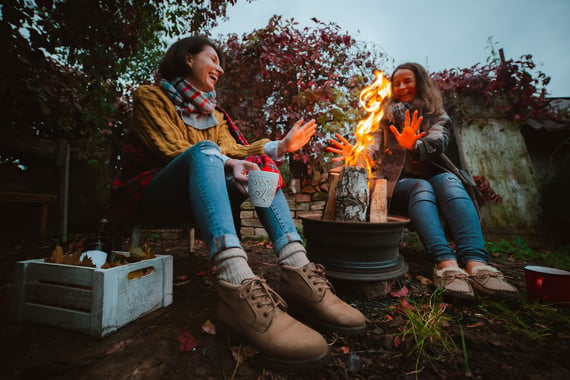Connection with someone takes more than common interests. It also takes this.

Do you know who created the world’s first social network? It wasn’t Zuckerberg, Dorsey, or Tom from MySpace.
It was the person who kindled the first fire. The fire’s loud crackling, billowing smoke, and beautiful orange glow attracted others in the village towards it. Soon everyone was gathered around basking in the warmth of the flames.
The discovery of fire changed everything. Fire became a cornerstone of human survival. It was instrumental in protecting the village from predators, cooking food, and providing light in the dark. And it transformed how people connected. The light from a fire extended the day giving humans more time to connect, providing warmth that wondrously enabled relationships to deepen like never before. People clicked over the flick of flames.
A recent study of the Ju/’hoan hunter-gatherers of the southern African countries of Namibia and Botswana found major differences between firelit talk and non-firelit talk. When the Ju/’hoan weren’t around a fire, their conversations centered on “practicalities and sanctioning gossip.” Firelit conversations, however, “evoked the imagination, helped people remember and understand others in their external networks, healed rifts of the day, and conveyed information about cultural institutions that generate regularity of behavior and corresponding trust.”
Fire then, and still today, cultivated so much connection between people because it created a shared reality. Individuals were jointly experiencing something beyond themselves in real time.
Shared Realities Make People Click
According to Columbia University psychologist Maya Rossignac-Milon, the theory of shared reality suggests that we are most likely to feel closer to each other when we turn our mutual attention to something beyond ourselves. That's exactly what happened to the Ju/’hoan. No fire (or shared reality) and their conversations were superficial. With fire (or a shared reality) and conversation elevated, causing connections to thrive.
Shared reality is the third party in any social connection. And it matters. It's not enough to have common interests with a friend or colleague but to share experiences together.
According to Paul Eastwick, a professor of psychology at the University of California at Davis who studies close relationships, “[Shared reality] serves as a reminder that similarity is often a thing that two people create or discover together in the moment. It wasn’t ‘there’ on paper before the interaction took place.” Often our urge is to connect with people who are similar to us, but shared reality theory suggests we may not know what those similarities are until we meet the other person. It's not so much about with whom we are talking but what we are talking about.
Have you ever been on a delayed flight while on the runway and noticed how chatty some passengers become with complete strangers? The reason for the instant connections is a shared reality. The delayed flight becomes the new reality that every passenger shares. A shared reality serves as a triangulation point between two individuals that knits them closer together.
Additionally, spaces like museums or art galleries provide the material you need to create a shared reality with another person. Shared reality pushes conversations to be about the world around us rather than ourselves.
Strengthen Pairing Through Reality Sharing
With this understanding of shared reality, it's clear how technology can break our social connections. If while at an art gallery, instead of consuming the same piece of art, someone is on their phone, the reality isn't shared. While you may be sharing the same space, the full reality isn't shared, thus hindering the potential for a connection.
Remote work environments (video calls, Slack channels, asynchronous collaboration tools, etc.) can also have a detrimental effect on people's ability to construct shared realities. By definition, these virtual environments strip out the external world and severely limit shared realities from occurring.
If your goal is to strengthen team connections, get out of the office. Share a new reality. For in-person teams, get together out of the office. For remote or hybrid teams, get together out of your office.
Getting out of the office enables colleagues to make sense of a new environment together, cementing relationships in the process. Whether it's monthly, quarterly, or annually, make shared realities a priority because social connection is imperative to the health and performance of any team or community.
As a team connection keynote speaker and trainer, I help companies build stronger teams and cultures via human connection. If you'd like help solving tough teamwork challenges inside your organization, click here.





